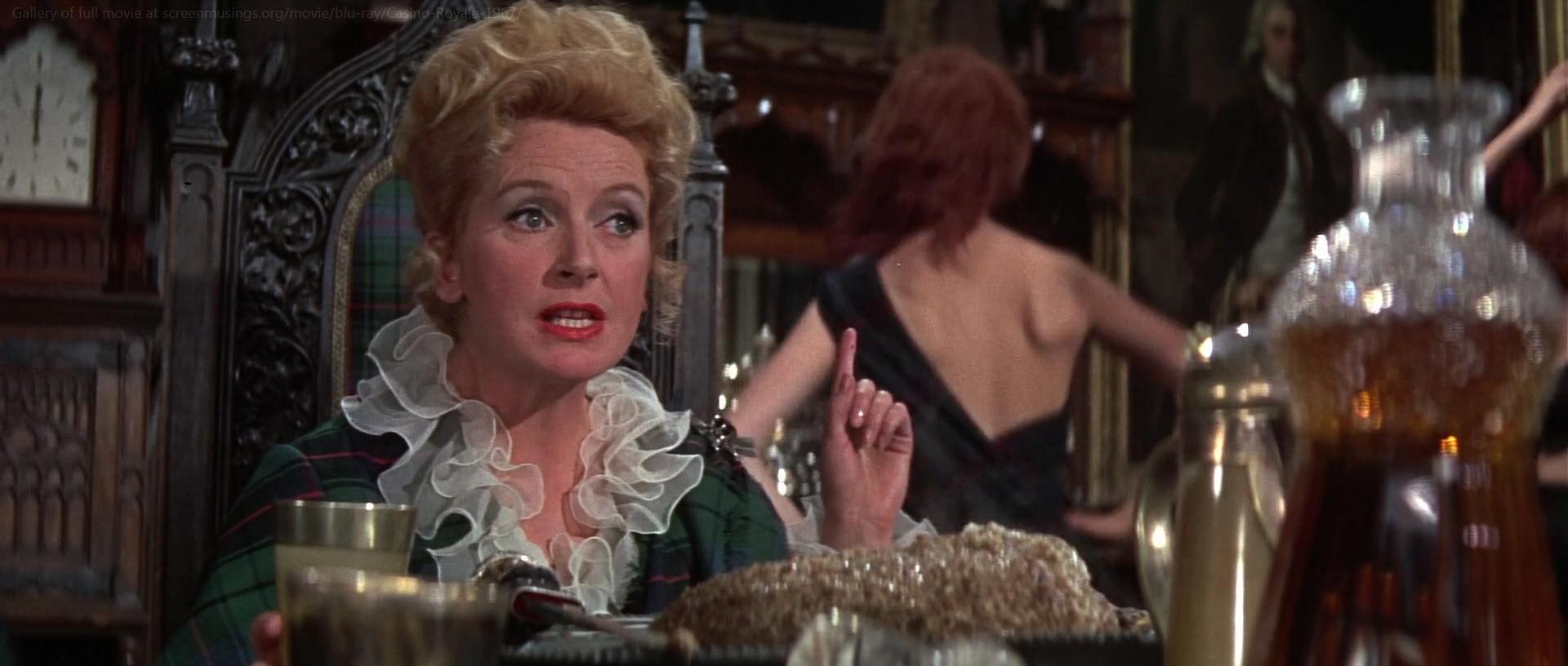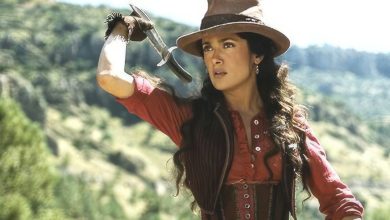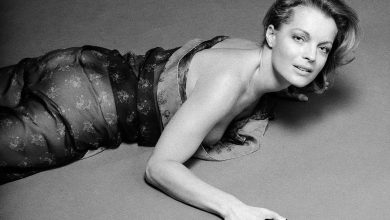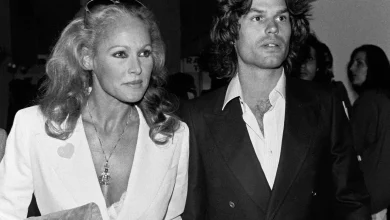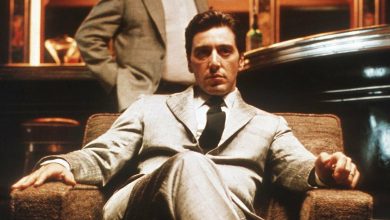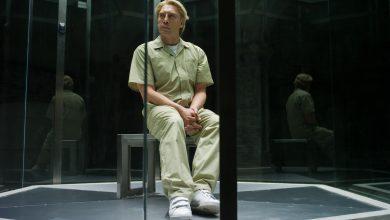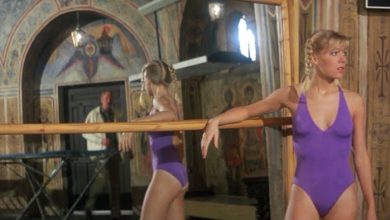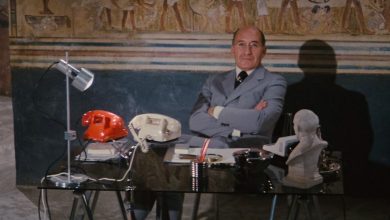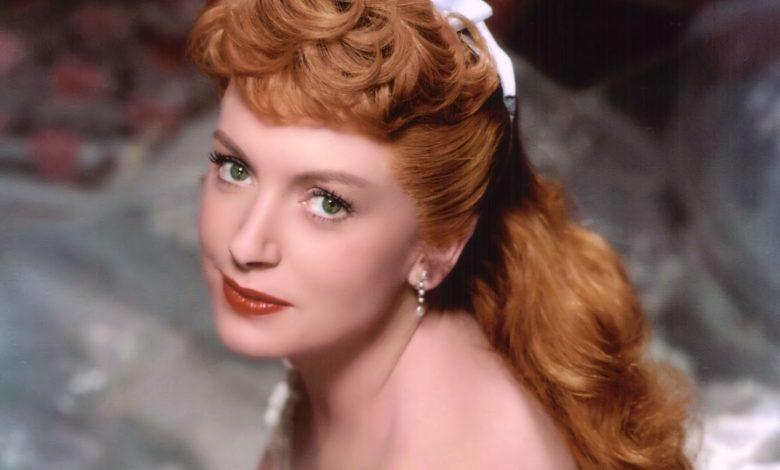
From the shores of Scotland to the glamorous lights of Hollywood, Deborah Kerr’s remarkable journey embodies the essence of a true cinematic icon. Born as Deborah Jane Trimmer on September 30, 1921, in Hillhead, Glasgow, Kerr’s life unfolded as a tale of passion, dedication, and timeless performances. With a career spanning decades, she captivated audiences with her exceptional talent, leaving an indelible mark on the world of entertainment. This article delves into the life, career, and legacy of Deborah Kerr, exploring her early influences, Hollywood stardom, and enduring impact on the portrayal of women in cinema.
Key Takeaways:
- Versatile Talent: Deborah Kerr’s career showcased her remarkable versatility, seamlessly transitioning from ballet to theater and eventually conquering Hollywood with her diverse roles.
- Authenticity in Characters: Known for embodying authenticity, Kerr brought depth and relatability to each character, redefining the portrayal of women in film.
- Memorable Legacy: Her legacy extends beyond her performances, inspiring generations of actors and leaving an indelible impact on cinematic storytelling.
As we journey through the life of this iconic actress, we uncover the stages of her career, from her early theater experiences to her celebrated Hollywood roles. Through triumphs and challenges, Deborah Kerr’s story serves as a testament to the power of talent, determination, and the ability to touch the hearts of audiences worldwide.
Deborah Kerr: A Scottish Actress and Hollywood Icon
Deborah Jane Trimmer, known to the world as Deborah Kerr, was a Scottish actress whose remarkable talent and versatility left an indelible mark on the world of cinema. From her early years on the stage to her Hollywood stardom, Kerr’s journey is one of dedication, passion, and unwavering commitment to her craft. Let’s delve into the life and career of this iconic actress who captivated audiences for decades.
Early Life and Theatre Beginnings
Born on September 30, 1921, in Hillhead, Glasgow, Deborah Kerr’s early life was marked by her innate curiosity and love for the arts. She was the daughter of Kathleen Rose and Capt. Arthur Charles Kerr Trimmer, a war veteran turned naval architect. Kerr’s upbringing was both nurturing and vibrant, setting the stage for her future success. She received her education at Northumberland House School and Rossholme School before embarking on a career in the arts.
Kerr’s journey into the world of acting began with ballet training and her first stage appearance in 1938 at Sadler’s Wells. It was her aunt, Phyllis Smale, who introduced her to the world of drama, and soon Kerr found her true calling as an actress. This early training laid the foundation for her later accomplishments on both stage and screen.
Rising in the World of Film Stardom
Kerr’s first foray into films was marked by challenges and triumphs. Her initial role in “Contraband” (1940) may have been cut, but it didn’t deter her spirit. She quickly caught the industry’s attention with her performances in “Major Barbara” (1941) and “Hatter’s Castle” (1942), showcasing her undeniable talent.
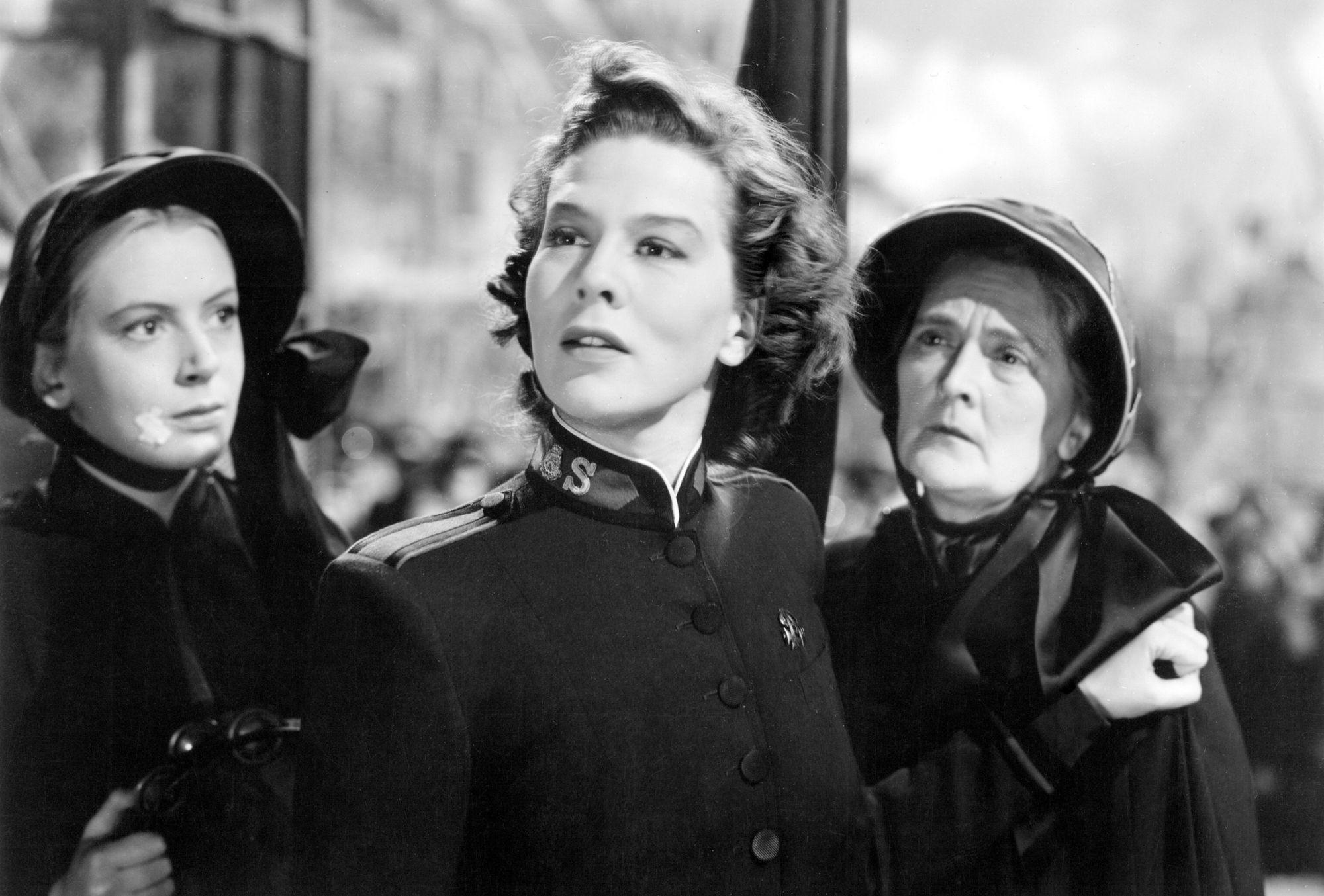
It was Michael Powell and Emeric Pressburger’s “The Life and Death of Colonel Blimp” (1943) that truly marked a turning point in Kerr’s career. Her portrayal of three distinct characters demonstrated her range and depth as an actress. This film also marked the beginning of her collaboration with Powell, leading to a successful partnership.

Hollywood Calling and International Acclaim
Hollywood beckoned, and Kerr answered. Her relocation to the United States marked a new chapter in her career, where she became synonymous with portraying strong, refined English women. Her first film for MGM, “The Hucksters” (1947), displayed her maturity and versatility, paving the way for roles that would showcase her undeniable charm.
Kerr’s portrayal of Karen Holmes in “From Here to Eternity” (1953) marked a departure from her previous roles. The iconic beach scene with Burt Lancaster became etched in cinematic history, and her Oscar nomination solidified her position as a respected actress in Hollywood. Her Broadway debut in “Tea and Sympathy” further showcased her talent, earning her a Tony Award nomination.
Peak Years and Legacy
The 1950s and 1960s were marked by Kerr’s peak years of stardom. She shone in roles such as Anna Leonowens in “The King and I” (1956), a performance that demonstrated her ability to command the screen with grace and elegance. Her collaborations with notable actors like Cary Grant and Yul Brynner further solidified her status as a Hollywood icon.
Kerr’s legacy extended beyond the silver screen. Her dedication to her craft and her ability to embody a wide range of characters made her a role model for aspiring actors. Her impact on the film industry continues to be celebrated, and her influence can be seen in the performances of countless artists who followed in her footsteps.
Trivia and Notable Achievements
- Casino Royale and Humor: Deborah Kerr’s sense of humor shone through her work, as seen in her role as Agent Mimi in “Casino Royale.” She humorously referred to a substantial paycheck as the “Charles K. Feldman Memorial Swimming Pool,” funded by her earnings from the film’s extended production.
- Oldest “Bond Girl”: At 45 years old, Kerr held the title of the oldest “Bond Girl” until Monica Bellucci took the mantle at 50 in “Spectre” (2015). Kerr’s portrayal of Agent Mimi added a unique touch to the James Bond universe.

Early Life, Hollywood Stardom, and Lasting Legacy
Deborah Kerr’s journey from her early life in Glasgow to becoming a Hollywood legend is a testament to her resilience, talent, and unwavering dedication to her craft. Her ability to seamlessly transition between stage and screen, her diverse roles, and her memorable performances have left an indelible mark on the world of entertainment. With each character she portrayed, Kerr added depth, emotion, and authenticity, captivating audiences and earning her a place in cinematic history.
WATCH DEBORAH KERR’S MOVIES
FAQ
1. What were some of Deborah Kerr’s early influences on her acting career?
Deborah Kerr’s early influences on her acting career were rooted in her upbringing and exposure to the arts. Raised in a nurturing environment in Glasgow, Kerr’s curiosity and love for the arts were fostered from a young age. Her ballet training and stage appearances at Sadler’s Wells and Oxford Playhouse showcased her natural talent and dedication. Her aunt, Phyllis Smale, played a significant role as her first acting teacher, guiding her into the world of drama. This foundation in both dance and theater laid the groundwork for her later success on the screen.
2. How did Deborah Kerr’s transition to Hollywood impact her career?
Deborah Kerr’s transition to Hollywood marked a pivotal moment in her career, propelling her to international acclaim. Her relocation led to a successful collaboration with MGM, where she became known for her refined English characters. This transition allowed her to showcase her versatility, from mature satire in “The Hucksters” to the iconic role of Karen Holmes in “From Here to Eternity.” Kerr’s Hollywood journey cemented her position as a respected and sought-after actress, opening doors to diverse roles that showcased her range and depth.
3. What was Deborah Kerr’s impact on the portrayal of women in cinema?
Deborah Kerr made a significant impact on the portrayal of women in cinema by bringing depth, strength, and complexity to her characters. Her ability to embody both refined English ladies and more complex roles like the troubled Karen Holmes in “From Here to Eternity” showcased the multidimensionality of women on screen. Kerr’s performances went beyond stereotypes, allowing audiences to connect with characters who grappled with genuine emotions and challenges. Her legacy serves as an inspiration for future generations of actresses to bring authenticity and depth to their portrayals.
4. What role did Deborah Kerr play in “The King and I” and how did it contribute to her legacy?
In “The King and I,” Deborah Kerr portrayed Anna Leonowens, a strong-willed Englishwoman who becomes a governess to the children of the King of Siam. Kerr’s portrayal was marked by grace, determination, and an undeniable chemistry with co-star Yul Brynner. Her ability to convey the complexities of her character’s relationship with the King, as well as her strong influence on the Siamese court, solidified her performance as a cornerstone of the film. This iconic role added to Kerr’s legacy, showcasing her ability to excel in both dramatic and musical roles.
5. What memorable contributions did Deborah Kerr make to the Bond franchise?
Deborah Kerr’s memorable contribution to the Bond franchise was her role as Agent Mimi in “Casino Royale.” Known for her sense of humor, Kerr’s portrayal added a unique touch to the film. Her humorous take on her substantial paycheck, which she playfully referred to as the “Charles K. Feldman Memorial Swimming Pool,” showcased her wit and charm. While not a traditional Bond girl, Kerr’s portrayal left a lasting impression on the franchise’s history.
6. How did Deborah Kerr’s portrayal in “From Here to Eternity” impact her career?
Deborah Kerr’s portrayal of Karen Holmes in “From Here to Eternity” marked a pivotal moment in her career. Departing from her refined English roles, Kerr embraced a character with depth and sensuality. The iconic beach scene with Burt Lancaster became synonymous with her performance, and her Oscar nomination for Best Actress solidified her status as a respected Hollywood figure. This role showcased her ability to take on challenging characters and helped reshape her image in the industry.
7. What was Deborah Kerr’s contribution to both stage and screen?
Deborah Kerr’s contribution to both stage and screen was marked by her exceptional talent, versatility, and dedication. Her early ballet training and stage appearances paved the way for her success in the film industry. On the stage, her Broadway debut in “Tea and Sympathy” earned her a Tony Award nomination, while her film roles showcased her ability to portray a wide range of characters. Kerr’s legacy lives on as she continues to inspire aspiring actors to excel in both mediums.
8. What impact did Deborah Kerr have on the portrayal of romance in cinema?
Deborah Kerr’s impact on the portrayal of romance in cinema was profound. Her chemistry with leading men like Burt Lancaster, Cary Grant, and Yul Brynner added depth and authenticity to romantic storylines. The romantic beach scene in “From Here to Eternity” and the iconic “An Affair to Remember” showcased her ability to convey genuine emotions on screen. Kerr’s performances helped redefine romantic storytelling, influencing how audiences perceive and connect with on-screen relationships.
9. How did Deborah Kerr’s legacy extend beyond her acting career?
Deborah Kerr’s legacy extended beyond her acting career through her influence on aspiring actors and her lasting impact on the film industry. Her dedication to her craft, her ability to adapt to diverse roles, and her commitment to authenticity served as an inspiration for future generations of actors. Kerr’s influence can be seen in the performances of artists who continue to draw inspiration from her work. Her contributions continue to shape the way actors approach their roles and connect with audiences.
10. What qualities made Deborah Kerr a timeless Hollywood icon?
Deborah Kerr’s timeless Hollywood icon status can be attributed to her exceptional talent, versatility, and the authenticity she brought to each role. Her ability to seamlessly transition between stage and screen, her dedication to portraying multifaceted characters, and her innate charisma set her apart. Kerr’s performances were marked by genuine emotions and a relatable quality, allowing audiences to connect with her characters on a profound level. Her legacy as a Hollywood icon endures through her impactful body of work and her enduring influence on the world of cinema.
Conclusion: Celebrating a Cinematic Luminary
Deborah Kerr’s legacy shines as brightly as her performances did on screen. Her ability to seamlessly transition between roles and genres, coupled with her commitment to authenticity, created a body of work that continues to resonate with audiences today. From her early theater days to her Hollywood stardom, Kerr’s journey stands as a testament to the enduring impact of talent, dedication, and a passion for storytelling.
Through her performances, Kerr transported us to different worlds and brought characters to life with a level of authenticity that remains unmatched. Her influence extended beyond the silver screen, inspiring future generations of actors to approach their craft with sincerity and depth. As we celebrate Deborah Kerr’s remarkable journey, we honor not only a cinematic luminary but also a woman who left an indelible mark on the world of film and forever shaped the art of storytelling.



